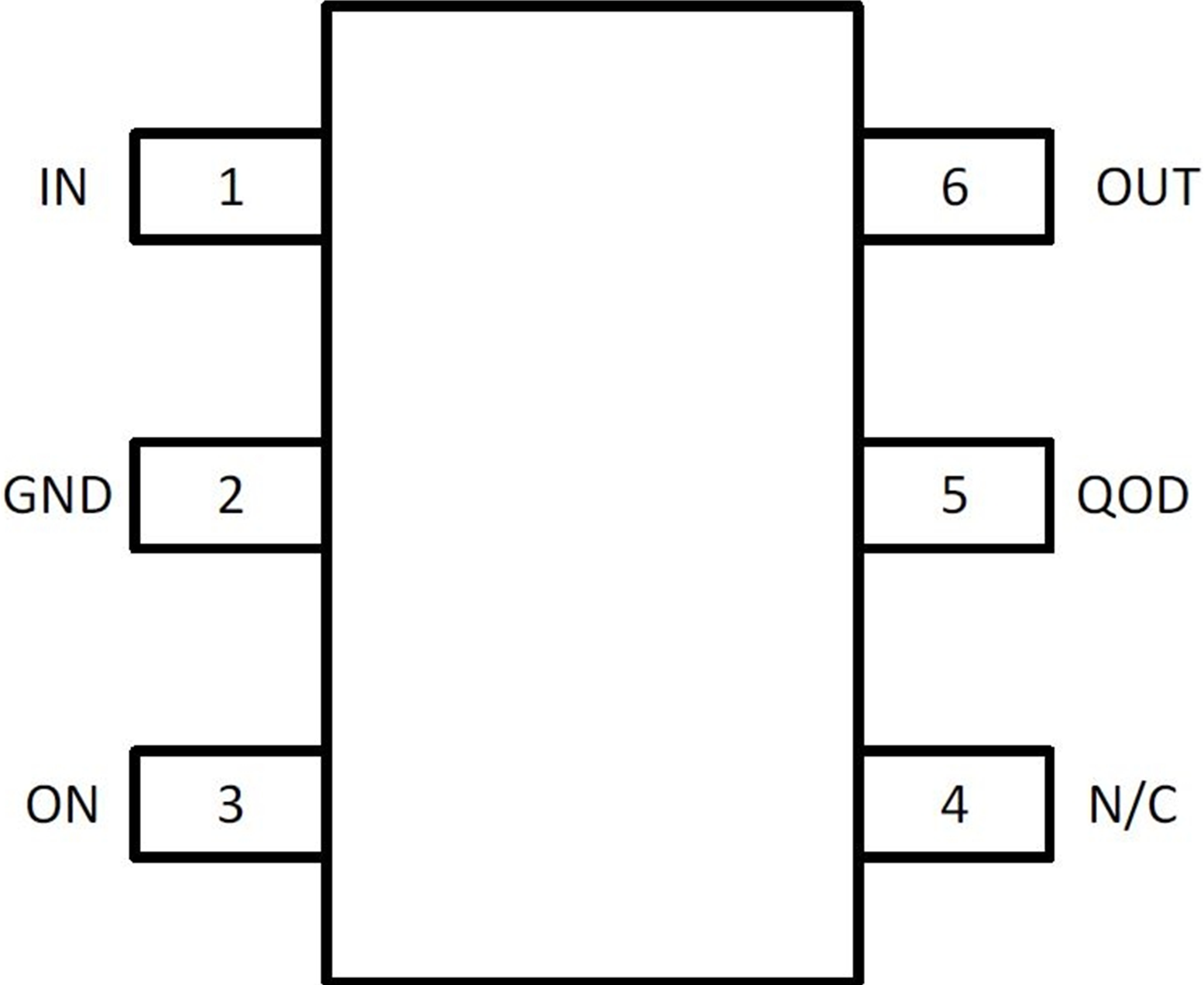SLVSEN5B October 2018 – May 2019 TPS22919
PRODUCTION DATA.
- 1 Features
- 2 Applications
- 3 Description
- 4 Revision History
- 5 Pin Configuration and Functions
- 6 Specifications
- 7 Parameter Measurement Information
- 8 Detailed Description
- 9 Application and Implementation
- 10Power Supply Recommendations
- 11Layout
- 12Device and Documentation Support
- 13Mechanical, Packaging, and Orderable Information
Package Options
Mechanical Data (Package|Pins)
- DCK|6
Thermal pad, mechanical data (Package|Pins)
- DCK|6
Orderable Information
5 Pin Configuration and Functions
DCK Package
6-Pin SC-70
Top View

Pin Functions
| PIN | I/O | DESCRIPTION | |
|---|---|---|---|
| NO. | NAME | ||
| 1 | IN | I | Switch input. |
| 2 | GND | — | Device ground. |
| 3 | ON | I | Active high switch control input. Do not leave floating. |
| 4 | NC | — | No connect pin, leave floating. |
| 5 | QOD | O | Quick Output Discharge pin. This functionality can be enabled in one of three ways.
|
| 6 | VOUT | O | Switch output. |